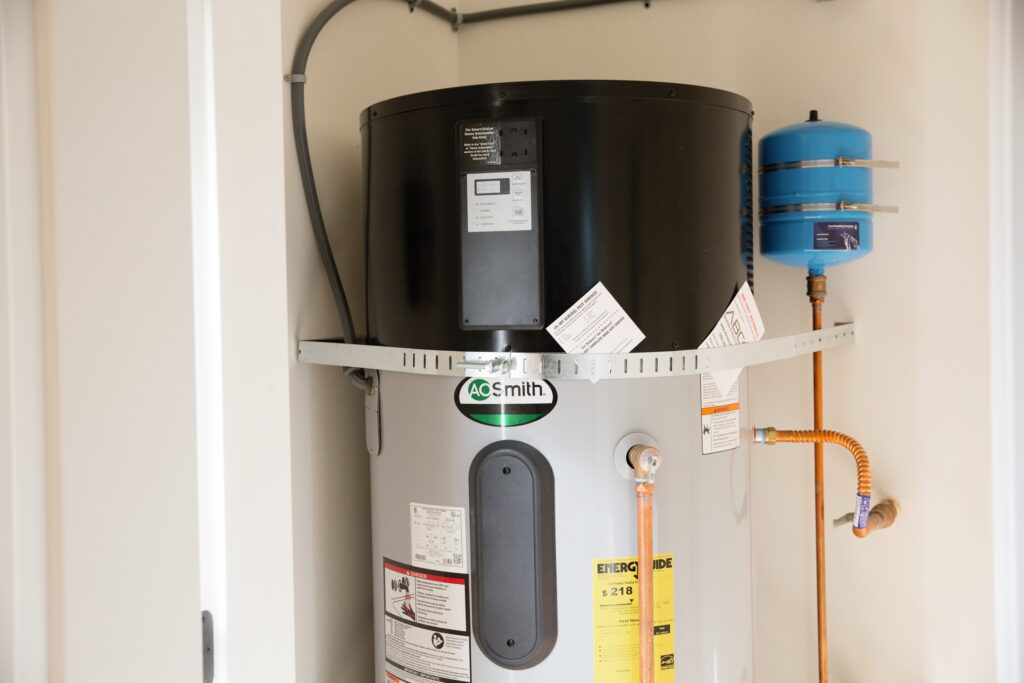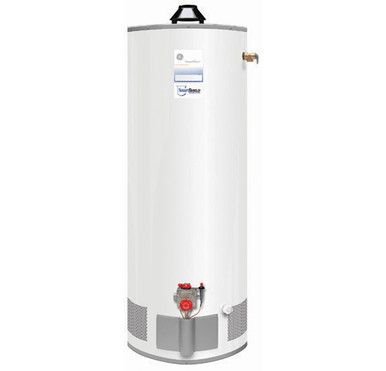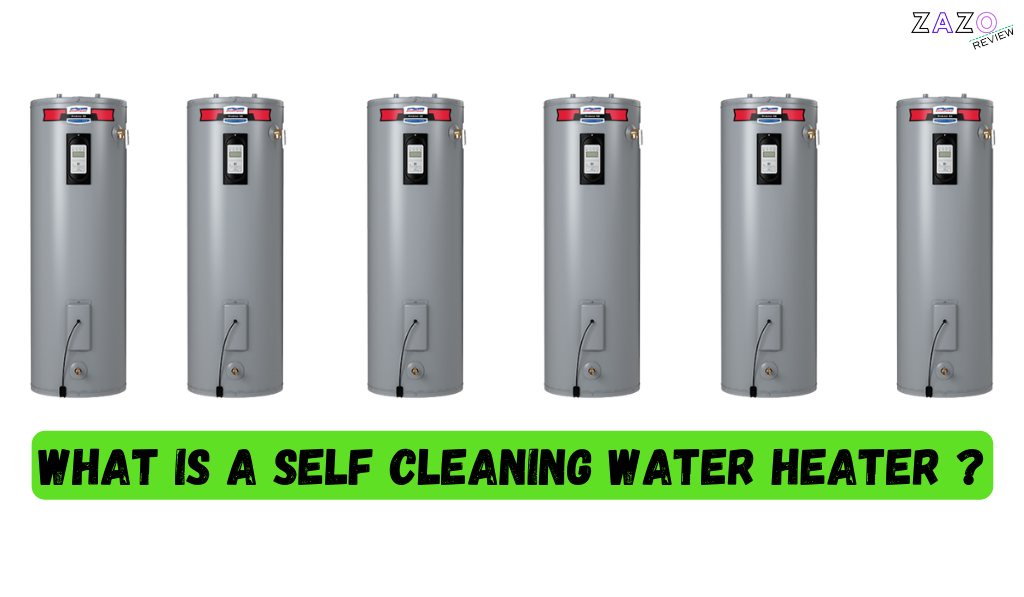A self cleaning water heater is a type of water heater that utilizes a curved dip tube to swirl the water and prevent sediment from settling in the tank. It is an effective way to reduce sediment build-up and maintain the quality of the water.
Unveiling Self Cleaning Water Heaters
Self-cleaning water heaters have revolutionized the way we heat water at home or in any commercial setting. These innovative devices go beyond traditional water heaters by incorporating advanced technology that helps to keep the tank clean and free from sediment buildup. In this article, we will explore the importance and benefits of self-cleaning technology and delve into the core differences between traditional and self-cleaning heaters.
Importance And Benefits Of Self-cleaning Technology
Self-cleaning technology in water heaters offers several crucial advantages that make them a game-changer in the industry. Let’s take a closer look at some of the key benefits of this innovative technology:
- Prevents sediment buildup: The primary function of self-cleaning water heaters is to prevent sediment from settling at the bottom of the tank. This is achieved through a specially designed curved dip tube that swirls the water, agitating the sediment and keeping it in suspension.
- Enhances efficiency: By preventing sediment buildup, self-cleaning technology ensures that the water heater operates at optimum efficiency. Sediment can act as a barrier, reducing heat transfer and forcing the heating element to work harder, ultimately consuming more energy.
- Prolongs the lifespan: Sediment buildup can lead to corrosion and deterioration of the water heater tank over time. With self-cleaning technology, the tank remains clean, reducing the risk of damage and extending the lifespan of the unit.
- Improves water quality: Sediment can contain impurities and minerals that affect water quality. The self-cleaning process helps to maintain cleaner and healthier water for bathing, cooking, and other household activities.
- Reduces maintenance: Traditional water heaters require periodic flushing to remove sediment manually. Self-cleaning water heaters eliminate the need for such maintenance, saving you time and effort.
Core Differences Between Traditional And Self-cleaning Heaters
Traditional water heaters and self-cleaning water heaters differ significantly in terms of their internal mechanisms and overall performance. Here are the key differences you should be aware of:
| Traditional Water Heaters | Self-Cleaning Water Heaters |
|---|---|
| Regular dip tube | Curved dip tube for enhanced water agitation |
| Manual sediment removal required | Automatic self-cleaning process |
| Sediment buildup reduces efficiency | Sediment prevention improves efficiency |
| Increased risk of tank corrosion | Reduced risk of tank damage and corrosion |
As you can see, self-cleaning water heaters offer superior performance and convenience compared to their traditional counterparts. They eliminate the need for manual maintenance, enhance efficiency, prolong the lifespan of the unit, and ensure cleaner, higher-quality water for your everyday needs.
How Self Cleaning Water Heaters Operate
A self-cleaning water heater operates by utilizing a curved dip tube to agitate the water and prevent sediment from settling in the tank, reducing the need for manual maintenance. These innovative water heaters are available in both gas and electric models.
The Role Of The Dip Tube In Self-cleaning Systems
A key component of self-cleaning water heaters is the dip tube. Unlike regular water heaters, self-cleaning models feature a curved dip tube that is strategically designed to swirl the water inside the tank. This swirling motion serves a crucial role in agitating sediment that may be present in the water. By swirling the water, the dip tube prevents the sediment from settling at the bottom of the tank, ensuring a cleaner and more efficient operation.
Explanation On Sediment Agitation And Prevention
Self-cleaning water heaters excel at preventing sediment build-up. The swirling motion created by the dip tube agitates the sediment, preventing it from collecting and settling at the bottom of the tank. This continuous movement inhibits the sediment from adhering to the tank walls, reducing the chances of clogs, blockages, and potential damage to the heating elements. By actively preventing sediment accumulation, self-cleaning water heaters maintain their performance and efficiency over time.
Components And Mechanics Unique To Self-cleaning Models
Self-cleaning water heaters are equipped with various components and mechanics that are specifically designed to enhance their self-cleaning capabilities. In addition to the curved dip tube, these models often feature:
- Anode rods: While anode rods are present in regular water heaters as well, they play a crucial role in self-cleaning models. Anode rods attract and collect minerals, which help prevent corrosion. By reducing the presence of minerals in the tank, anode rods contribute to the overall cleanliness of the water.
- Sediment flushing system: Many self-cleaning water heaters come with a built-in sediment flushing system. This system allows for easy removal of accumulated sediment by simply opening a valve and draining the tank. This maintenance process helps maintain optimal performance and prolong the lifespan of the water heater.
- Turbulent introduction of water: Some self-cleaning models utilize a turbulent introduction of water into the tank. This mechanism creates additional agitation and turbulence, further preventing sediment from settling and accumulating.

Credit : www.hunker.com
Effortless Maintenance Explored
When it comes to maintaining a water heater, regular tasks such as flushing the tank and cleaning out sediment can be time-consuming and burdensome. However, with the advent of self-cleaning water heaters, homeowners can enjoy effortless maintenance and hassle-free operation. These innovative appliances incorporate advanced technology to minimize sediment build-up and prolong the lifespan of the heater. In this section, we will explore the various aspects of effortless maintenance offered by self-cleaning water heaters.
Periodic Tasks Reduced By Self-cleaning Features
Self-cleaning water heaters incorporate a curved dip tube that swirls the water, preventing sediment from settling in the tank. This unique feature reduces the need for frequent flushing of the tank, which is a typical maintenance task for conventional water heaters. By continuously agitating the water, self-cleaning water heaters effectively prevent sediment build-up, saving you valuable time and effort.
Longevity And Efficiency Gains From Self-cleaning Technology
The self-cleaning technology of these water heaters not only simplifies maintenance but also contributes to their longevity and efficiency. By minimizing sediment accumulation, self-cleaning water heaters ensure optimal heat transfer, resulting in enhanced energy efficiency. Additionally, reduced sediment build-up leads to fewer instances of corrosion and scale formation, prolonging the lifespan of the heater and minimizing the risk of costly repairs or replacements in the future.
Maintenance Aspects Still Required For Optimal Performance
While self-cleaning water heaters significantly reduce the need for certain maintenance tasks, it’s important to note that some maintenance aspects are still required for optimal performance. Regular inspection of the dip tube and other components, as well as monitoring water pressure and temperature, are essential to ensure the longevity and efficiency of the heater. Additionally, periodic checks for leaks, proper insulation, and ensuring the heater is free from debris or obstructions are important maintenance tasks that should not be overlooked.
Is A Self-cleaning Model Worth The Investment?
When it comes to choosing a water heater for your home, investing in a self-cleaning model is worth considering. Self-cleaning water heaters use innovative technology to reduce sediment build-up and prolong the life of your water heater. But are they really worth the investment? Let’s take a closer look.
Comparing Costs: Self-cleaning Vs Conventional Models
One of the key factors to consider when evaluating the value of a self-cleaning water heater is the cost. While self-cleaning models may have a slightly higher upfront price compared to conventional water heaters, their long-term benefits outweigh the initial investment.
Self-cleaning water heaters require less maintenance and frequent flushing, which can save you both time and money in the long run. With conventional models, sediment build-up can lead to decreased efficiency and increased energy consumption. This means higher utility bills and potentially costly repairs or replacements. Self-cleaning water heaters, on the other hand, actively prevent sediment build-up, keeping your energy costs low and extending the lifespan of your water heater.
Assessing The Value Proposition Of Self-cleaning Water Heaters
When assessing the value proposition of a self-cleaning water heater, it’s important to consider the benefits it brings to your household. Not only do these models reduce sediment build-up and increase efficiency, but they also provide cleaner, fresher water.
By preventing sediment from settling in the tank, self-cleaning water heaters ensure that you and your family are not exposed to contaminants that can affect water quality. This is especially important if you have hard water or if your location experiences high sediment levels.
Additionally, self-cleaning water heaters offer peace of mind. You no longer have to worry about scheduling regular maintenance or dealing with the inconvenience of flushing your water heater. The automatic circulation system in self-cleaning models takes care of this task for you.
Real-world Testimonials And Expert Opinions
Real-world testimonials and expert opinions can provide valuable insights into the effectiveness of self-cleaning water heaters. Many homeowners who have made the switch to self-cleaning models report significant improvements in water quality, reduced energy consumption, and extended water heater lifespan.
Experts in the plumbing industry also recognize the benefits of self-cleaning water heaters. They praise the innovative design and technology that actively prevents sediment build-up, ultimately leading to cost savings and improved performance.
In conclusion, a self-cleaning water heater is worth the investment. Not only do they offer long-term cost savings, but they also provide cleaner water and eliminate the need for regular maintenance. With their improved efficiency and extended lifespan, self-cleaning water heaters are a smart choice for any homeowner.
Choosing Your Self Cleaning Water Heater
When it comes to selecting the right self-cleaning water heater for your home, there are a few factors to consider. Not all self-cleaning water heaters are created equal, so it’s important to do your research and choose a model that meets your specific needs. In this section, we will explore the factors to consider when selecting a self-cleaning water heater, recommended brands and models with self-cleaning features, and installation considerations for self-cleaning systems.
Factors To Consider When Selecting A Self-cleaning Water Heater
Choosing the right self-cleaning water heater starts with understanding your household’s hot water needs. Consider the following factors:
- Capacity: Determine the size of the water heater based on your family’s hot water usage. Consider the number of bathrooms, appliances, and simultaneous hot water demands.
- Energy Efficiency: Look for ENERGY STAR certified models to ensure optimal energy efficiency and lower utility bills.
- Self-Cleaning Mechanism: Research the specific self-cleaning mechanism used by each brand and model. Some may use a curved dip tube, while others may have advanced technology to agitate the water and prevent sediment buildup.
- Warranty: Check the warranty offered by the manufacturer. A longer warranty period indicates confidence in the product’s durability and performance.
Recommended Brands And Models With Self-cleaning Features
When it comes to self-cleaning water heaters, there are several trusted brands that offer reliable products. Here are a few recommended brands and models:
| Brand | Model | Features |
|---|---|---|
| Rheem | Performance Platinum | Curved dip tube for sediment agitating |
| Bradford White | RE350S6-1NCWW | Hydrojet Total Performance System |
| A.O. Smith | Signature Premier | Self-cleaning dip tube |
Installation Considerations For Self-cleaning Systems
Before installing a self-cleaning water heater, keep the following considerations in mind:
- Space: Ensure that you have enough space to accommodate the water heater and any necessary ventilation mechanisms.
- Gas or Electric: Determine whether you prefer a gas or electric self-cleaning water heater based on your home’s existing infrastructure.
- Professional Installation: It’s highly recommended to hire a professional plumber for the installation to ensure proper setup and adherence to safety standards.
- Maintenance: Although self-cleaning water heaters reduce sediment buildup, regular maintenance is still important. Refer to the manufacturer’s instructions for specific maintenance requirements.
By considering these factors, exploring recommended brands and models, and ensuring proper installation, you can choose a self-cleaning water heater that suits your hot water needs and provides efficient, hassle-free performance for years to come.
Self-cleaning Water Heaters: The Ultimate Guide
A self-cleaning water heater is a revolutionary appliance that takes the hassle out of regular maintenance and ensures the longevity of your water heater. Unlike traditional water heaters, self-cleaning water heaters are equipped with a curved dip tube that swirls the water to agitate the sediment and prevent it from settling in the tank. This innovative design helps to reduce sediment build-up, improve energy efficiency, and extend the lifespan of your water heater.
Step-by-step Guide To Operating A Self-cleaning Water Heater
Operating a self-cleaning water heater is a straightforward process. Here is a step-by-step guide to help you get started:
- Start by familiarizing yourself with the user manual provided by the manufacturer. This will give you detailed instructions specific to your self-cleaning water heater model.
- Locate the control panel of your water heater. This is where you will find the settings and operation buttons.
- Turn on the power to the water heater, either by flipping a switch or pressing the power button.
- Set the desired temperature for your water heater using the temperature controls on the control panel.
- Leave the self-cleaning function on, as it is designed to automatically circulate the water and prevent sediment build-up.
Troubleshooting Common Issues In Self-cleaning Systems
While self-cleaning water heaters are designed to be low-maintenance, there are still a few common issues that you may encounter. Here are some troubleshooting tips to help you address them:
- If you notice a decrease in water pressure, check the intake and outlet pipes for any blockages or obstructions. Clearing these should resolve the issue.
- If your water heater is not heating water to the desired temperature, check the thermostat settings. Adjust them accordingly to ensure proper heating.
- If you experience any leaks or drips, inspect the connections and valves for any signs of damage. Tighten or replace them if necessary.
- If you encounter any other issues that you are unable to resolve on your own, it is recommended to contact a professional plumber for assistance.
Best Practices For Ensuring The Longevity Of Your Water Heater
To maximize the lifespan of your self-cleaning water heater and ensure its optimal performance, follow these best practices:
- Regularly check and clean the intake and outlet pipes to prevent clogs and blockages.
- Flush the water heater every six months to remove any sediment that may have accumulated.
- Monitor the temperature and pressure relief valve for any signs of malfunction. Replace if necessary.
- Keep the area around the water heater clear of any flammable materials.
- Consider installing a water softener to prevent mineral deposits and prolong the lifespan of your water heater.
By following these best practices and properly operating and maintaining your self-cleaning water heater, you can enjoy reliable hot water for years to come.
What is a GE Self-Cleaning Water Heater, and how does it work?
The GE Self-Cleaning Water Heater is an innovative appliance designed to address the common issue of sediment buildup in traditional water heaters. Sediment, consisting mainly of minerals like calcium and magnesium, can accumulate at the bottom of the tank over time, affecting efficiency and performance. Here’s how the GE Self-Cleaning Water Heater works:

Credit : www.geappliances.com
- Dip Tube with Turbulence Inducer:
- The water heater features a specially designed dip tube with a turbulence inducer. This component creates swirling motions as cold water enters the tank.
- Turbulence for Sediment Disruption:
- The turbulence inducer disrupts and agitates sediment settled at the bottom of the tank. Creating swirling motions helps prevent the sediment from settling and accumulating.
- Automatic Flushing System:
- The GE Self-Cleaning Water Heater is equipped with an automatic flushing system. This system is designed to periodically flush out the loosened sediment, maintaining the tank’s cleanliness.
- Maintenance Cycle:
- Some models have a maintenance cycle that temporarily increases the water temperature. This elevated temperature helps dissolve any remaining sediment, and the subsequent flushing process removes it during normal usage.
- Smart Sensors:
- Advanced GE models often come with smart sensors that detect the sediment level in the tank. When the sediment reaches a certain point, the system activates the cleaning process, ensuring proactive maintenance.
- Anode Rods:
- Anode rods, commonly made of aluminium or magnesium, are often included in GE Self-Cleaning Water Heaters. These rods attract corrosive elements, providing additional protection against sediment formation and tank corrosion.
Benefits:
- Extended Lifespan: The self-cleaning mechanism contributes to a longer lifespan for the water heater.
- Energy Efficiency: Reduced sediment buildup translates to improved energy efficiency, potentially leading to cost savings.
- Maintenance-Free Operation: The automated cleaning process minimizes the need for manual intervention, offering a hassle-free user experience.
The GE Self-Cleaning Water Heater utilizes intelligent design elements, turbulence induction, and automated flushing mechanisms to prevent sediment buildup, ensuring optimal performance and longevity. Regularly following the manufacturer’s guidelines for maintenance will help users maximize the benefits of this innovative water-heating solution.
How does a self-cleaning water heater work?
A self-cleaning water heater employs innovative technologies to minimize sediment buildup and enhance its efficiency over time. Sediment accumulation is a common issue in traditional water heaters, particularly in areas with hard water. This sediment, primarily composed of minerals like calcium and magnesium, settles at the bottom of the tank and can lead to reduced heating efficiency and increased energy consumption. Here’s how a self-cleaning water heater works:
- Dip Tube with Turbulence Inducer:
- Self-cleaning water heaters often feature a specialized dip tube with a turbulence inducer. The dip tube directs cold water to the bottom of the tank, where it is heated.
- Turbulence Creation:
- The turbulence inducer creates swirling motions in the water as it enters the tank. This turbulence disturbs and breaks apart any sediment at the bottom.
- Sediment Flushing Mechanism:
- These water heaters are designed with a mechanism to flush out the loosened sediment periodically. This can be an automatic process triggered by a sensor or timer or occur during the heating cycles.
- Maintenance Cycle:
- Some self-cleaning water heaters have a maintenance cycle during which they intentionally increase the temperature of the water. This elevated temperature helps dissolve any remaining sediment and flush it out during the next use.
- Smart Sensors:
- Advanced models are equipped with smart sensors that detect sediment levels in the tank. When the sediment reaches a certain threshold, the system activates the cleaning process to prevent the buildup from compromising the heater’s performance.
- Anode Rods:
- Anode rods, typically made of aluminium or magnesium, are often used with self-cleaning mechanisms. These rods attract corrosive elements, protecting the tank and reducing the likelihood of sediment formation.
Benefits:
- Extended Lifespan: By minimizing sediment buildup, self-cleaning water heaters tend to have a longer lifespan than traditional models.
- Energy Efficiency: Improved efficiency means lower energy consumption, potentially saving costs.
- Consistent Performance: Users can enjoy consistent hot water delivery without concerns about reduced heating capacity.

Credit: www.amazon.com
Frequently Asked Questions Of What Is A Self Cleaning Water Heater
Is It Worth Getting A Self Cleaning Water Heater?
A self-cleaning water heater automatically circulates the water to reduce sediment build-up, preventing it from settling in the tank. It is worth getting a self-cleaning water heater as it helps maintain the quality and efficiency of the water heater, prolonging its lifespan.
How Do You Flush A Self Cleaning Water Heater?
To flush a self-cleaning water heater, follow these steps: 1. Turn off the power or gas supply to the water heater. 2. Connect a hose to the drain valve at the bottom of the tank. 3. Place the other end of the hose in a suitable drainage area.
4. Open the drain valve to allow the water to flow out, along with any sediment. 5. Once the tank is empty, close the drain valve and remove the hose. Remember to consult the manufacturer’s instructions for specific guidance on your water heater model.
How Does Self Cleaning Water Tank Work?
Self-cleaning water tanks work by using a curved dip tube to swirl the water, preventing sediment from settling in the tank. This agitates the water and helps to reduce sediment build-up. These tanks can be powered by electricity or gas and automatically circulate the water to keep it clean.
Are Ao Smith Water Heaters Self Cleaning?
AO Smith water heaters include a self-cleaning dip tube to minimize sediment in the tank, prolonging its lifespan and improving efficiency.
Conclusion
A self-cleaning water heater is a game-changer when it comes to maintaining a clean and efficient water heating system. With a unique curved dip tube, it constantly swirls the water and prevents sediment build-up, ensuring a longer lifespan for the tank.
This innovative feature eliminates the need for frequent maintenance and flushing, saving you time and effort. Say goodbye to clogged pipes and hello to consistently hot water. Invest in a self-cleaning water heater, and experience the convenience and peace of mind it offers.

I am a Water Heater specialist writer and blogger based in the USA & UK. I have been working with Water Heater for six long years. And I give trips on various Water Heater problems and solutions. I have a lot of experience with Water Heater And I share them here

